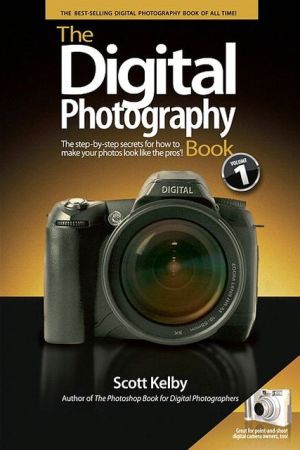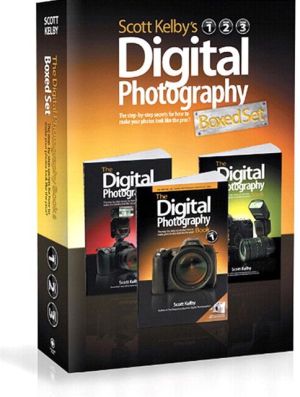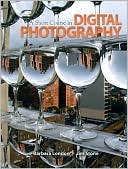4-H Guide to Digital Photography
Suddenly, anyone with a cell phone is a photographer. This book takes the basics of digital photography and makes them the tools for creative, interesting, and artistic picture-taking. Illuminating the most popular of 4-H projects, Daniel Johnson instructs beginners in the basics of composition, lighting, and the use of flashes--among other fundamentals of capturing a picture that’s more than just “flash.” With step-by-step, illustrated directions, along with spectacular...
Search in google:
The basics of digital photography--composition, lighting, the use of flashes--with step-by-step directions and spectacular examples. School Library Journal Gr 6 Up—Both of these guides provide sound and comprehensive information. Horses covers basic training techniques and riding skills such as mounting, saddling, reining, stopping and starting, and posture among other topics. The training techniques offer insight into equine behavior based on their history as prey animals. The authors also emphasize that horse owners' success will be determined by how much effort they are willing to expend on their relationship with their animals. The many color photographs clearly depict the methods and activities that are taking place, and the accompanying images further clarify what is happening and its significance. Colored boxes highlight core concepts. The illustrations feature only Western riding, but the information is pertinent to all riders. A strong emphasis is put on safety and common sense. Digital Photography also features numerous excellent photos that support the text. It explores types of digital cameras, how to take good photos, the complexities of lighting, managing images (including clear definitions of file types), and the importance of just enjoying this activity. Types of photography such as landscape and macro are explained. The author does an excellent job of discussing the importance of both technological details and artistic creativity. With their appealing, well-organized format, these two manuals offer thorough and pertinent information for novices and for those who are already enthusiasts and are looking to improve their skills.—Carol Schene, formerly at Taunton Public Schools, MA
Contents Acknowledgments Introduction: Welcome to Digital PhotographyChapter 1: Exploring Digital CamerasChapter 2: The Basics of Good PhotographyChapter 3: Creating Beautiful PicturesChapter 4: Let There Be Light(ing)Chapter 5: Managing Digital ImagesChapter 6: Exposure: The Big ThreeChapter 7: Tips for Specific Types of PhotographyChapter 8: Having FunChapter 9: Exhibiting Your PhotosGlossaryResourcesIndexAbout the Author/Photographer
\ From the PublisherBoth of these guides provide sound and comprehensive information. Horses covers basic training techniques and riding skills such as mounting, saddling, reining, stopping and starting, and posture among other topics. The training techniques offer insight into equine behavior based on their history as prey animals. The authors also emphasize that horse owners’ success will be determined by how much effort they are willing to expend on their relationship with their animals. The many color photographs clearly depict the methods and activities that are taking place, and the accompanying images further clarify what is happening and its significance. Colored boxes highlight core concepts. The illustrations feature only Western riding, but the information is pertinent to all riders. A strong emphasis is put on safety and common sense. Digital Photography also features numerous excellent photos that support the text. It explores types of digital cameras, how to take good photos, the complexities of lighting, managing images (including clear definitions of file types), and the importance of just enjoying this activity. Types of photography such as landscape and macro are explained. The author does an excellent job of discussing the importance of both technological details and artistic creativity. With their appealing, well-organized format, these two manuals offer thorough and pertinent information for novices and for those who are already enthusiasts and are looking to improve their skills.–Carol Schene, formerly at Taunton Public Schools, MA\ \ \ \ \ \ \ School Library JournalGr 6 Up—Both of these guides provide sound and comprehensive information. Horses covers basic training techniques and riding skills such as mounting, saddling, reining, stopping and starting, and posture among other topics. The training techniques offer insight into equine behavior based on their history as prey animals. The authors also emphasize that horse owners' success will be determined by how much effort they are willing to expend on their relationship with their animals. The many color photographs clearly depict the methods and activities that are taking place, and the accompanying images further clarify what is happening and its significance. Colored boxes highlight core concepts. The illustrations feature only Western riding, but the information is pertinent to all riders. A strong emphasis is put on safety and common sense. Digital Photography also features numerous excellent photos that support the text. It explores types of digital cameras, how to take good photos, the complexities of lighting, managing images (including clear definitions of file types), and the importance of just enjoying this activity. Types of photography such as landscape and macro are explained. The author does an excellent job of discussing the importance of both technological details and artistic creativity. With their appealing, well-organized format, these two manuals offer thorough and pertinent information for novices and for those who are already enthusiasts and are looking to improve their skills.—Carol Schene, formerly at Taunton Public Schools, MA\ \








